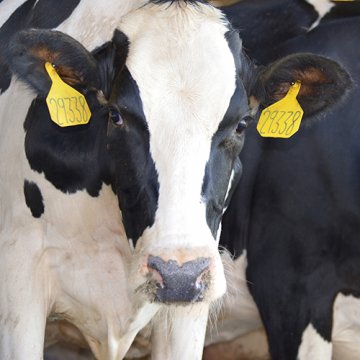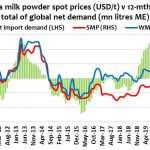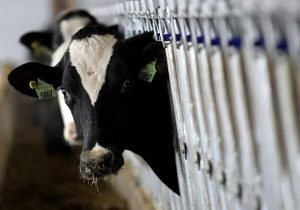
“The pandemic has been a gut punch to commodity prices across the board for American agriculture, but it has probably been most significant for the dairy industry and dairy farmers,” says Tom Vilsack, President and CEO of the U.S. Dairy Export Council. “We’ve seen Class 3 milk prices decline by 26% and Class 4 milk prices by 36% in the recent days. A more significant drop than just about any other commodity has endured.”
Tom Gallagher, CEO of Dairy Management Inc., says efforts have been immediately redirected “to do things to get products in the hands of people immediately.”
DMI is also working with its food service partners to connect suppliers and end users. With 60% of butter and 40% to 50% of cheese used in the food service sector, markets took a tremendous blow. Added to the stress was the closing of schools across the country, which accounts for 7% of the fluid milk use.
“Our challenge is to find where we can connect those disconnected supply chains to new outlets,” Gallagher says.
Barb O’Brien, president of DMI, says they have realigned their staff and created four emergency action teams that are working across traditional channels to address the challenges facing the market.
In addition to the news conference on Friday, April 10, O’Brien also outlined DMI’s business plan shift in a letter to Agriculture Secretary Sonny Perdue. “We have prioritized our work to focus on three key areas: schools, hunger, and foodservice and industry partnerships,” she says.
Those areas include:
1. Ensuring access to school meals. By working through the farmer-founded GENYOUth organization, local promotion groups, USDA and technology and food companies such as Domino’s, YUM! Brands and others, the goal is to ensure school children will continue to receive meals.
GENYOUth created the “For Schools’ Sake – Help Us Feed Our Nation’s Kids!” movement, which has generated $3 million in corporate and individual donations. More than 7,700 applications have been submitted by school districts across the country requesting up to $3,000 grants for equipment, packaging, and other supplies, O’Brien says.
2. Helping food banks meet a growing need. DMI is working with cooperatives and companies, quick serve and foodservice partners and Feeding America to broaden access to dairy foods for the growing number of people facing food insecurity. The checkoff is convening cooperative leaders seeking to find a destination for excess supply with local processors and food banks. This effort already is diverting more than 100,000 gallons of milk per week in Texas, New Mexico, Indiana, Michigan, Ohio, New York, and New England into the hunger system.
3. Convening partners across the supply chain. DMI is collaborating with domestic and international partners to realign the supply of dairy products to those in need and is working through the U.S. Dairy Export Council to assure dairy products continue or resume flowing into the critical export market. After more than 10 years of partnership with dairy farmers, Domino’s is working with GENYOUth and local organizations to pilot a grab-and-go meal program at 31 public school sites in Miami. So far, approximately 23,000 meals have been made available and similar opportunities through other franchisees in Michigan and other locations are being explored.
ADDITIONAL AID CRITICAL
Vilsack stressed that aid and assistance is needed in the dairy sector. He supports the initiatives put forth by the National Milk Producers Federation and the International Dairy Foods Association to address the needs of the industry.























